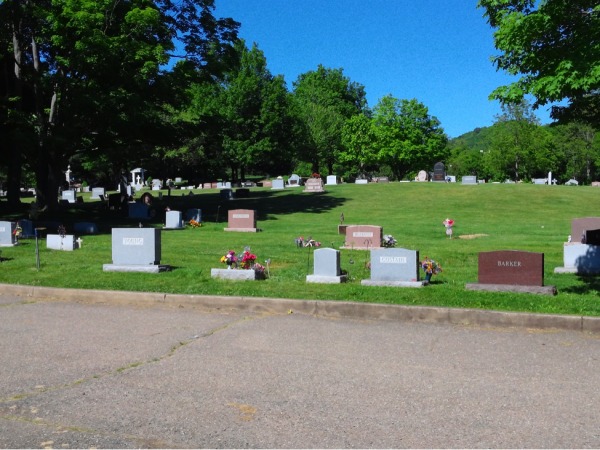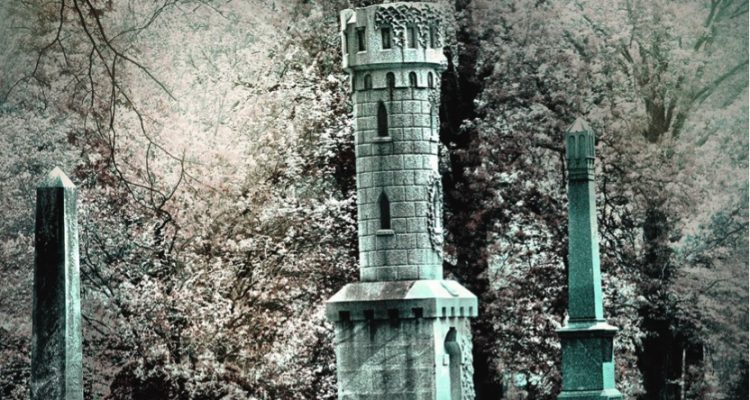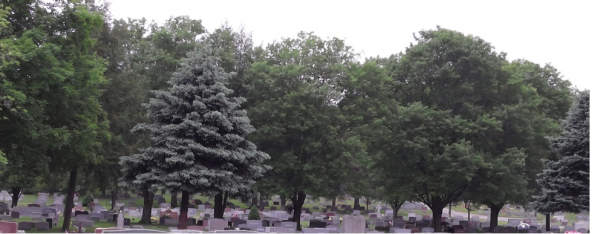
When I first decided to write about Greenwood, I figured it would be an article on the grand monuments and mausoleums that are housed there. I mean, that’s what makes a cemetery memorable, the huge structures erected to commemorate the lives of the pillars of a community. And I stubbornly held onto the belief that those monuments, which I will talk about in a moment, were the story. I held onto that belief through four trips to Greenwood in one week.
On my fifth trip. I finally realized the story that needed to be told, and although the monuments are part of it, they are merely the backdrop for a more important takeaway.
But first, here’s the story about trips one through four.
Trip One
As I turned into Greenwood, admittedly I was hesitant. I hadn’t been to the cemetery since just after my grandmother’s, Lucy Sinclair, funeral in 2001. I felt a bit like an intruder. I drove through a small portion of the cemetery, snapped a couple of photos, and made a hasty retreat. It’s not that I was nervous or creeped out; I just didn’t feel like I belonged. I felt like an interloper.
Later, I realized I had some pictures, but no real story. This meant I would have to make another trip to Greenwood. I resolved I would squeeze it in within the next few days.
Yeah, try the next day.
Trip Two
I didn’t anticipate returning that quickly, but even though my trip the day before had been brief, it was enough to entice me to explore further. So, the next day, I found myself once again slowly driving on the winding roads of the cemetery. It was on this trip that I encountered two of the most popular and talked about monuments in the cemetery, The Tallman and Thomas monuments.
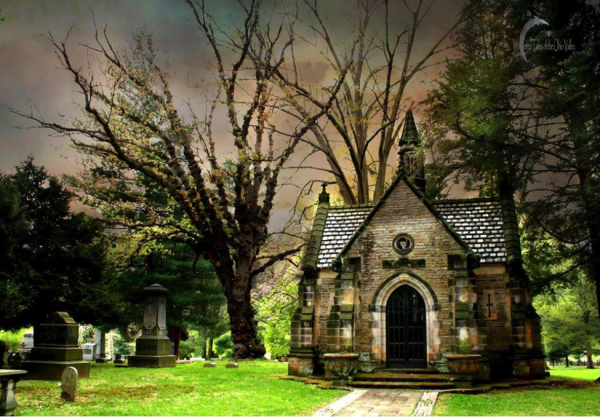
The Tallman Monument and Mausoleum is simply a breathtaking work of art. From its slate roof and intricately carved spires to its carved crosses and arched bronze doors, it is a sight to behold. It’s the resting place for Albert P. Tallman, president of First National Bank in Bellaire, Ohio, during the turn of the 20th century, his wife, Caroline, and their daughter, Helen, who succumbed to tuberculosis at the age of 20.
Just as notable, albeit for a completely different reason, is the Jacob C. Thomas monument. Jacob Thomas was one of the founders of the department store Stone & Thomas. To truly appreciate this behemoth of a monument, you really have to see it in person. The monument presents a bronze statue of Mr. Thomas standing in front of a cross, looking pious. On each side of him is a woman. The woman on the right is holding a wreath, while the woman on the left is holding a downward-pointing torch. Both have their heads lowered as if they’re in mourning. It is rumored that one woman is Mrs. Thomas, and the other is Mr. Thomas’ mistress, though I was not able to officially verify this. The monument also includes two large Corinthian columns with bronze oil lanterns perched on top of each column. An aside, Mr. Stone has a monument to himself in Greenwood as well, but it’s not nearly as ostentatious.
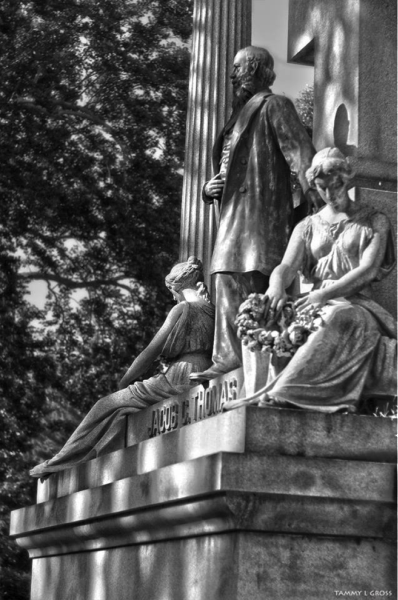
Then there’s the Schmulbach column. It’s a Corinthian column whose height you don’t really appreciate until you actually stand next to it and have to lean back and squint to see the top. Impressive only begins to describe it. I also visited the Taylor angel and the Maxwell Castle, both of which represent what is most likely a beautiful story about lost loved ones. I didn’t find much information on either of these monuments, but I’m determined to keep digging. From reading the grave markers surrounding the Maxwell monument, I learned the elder Maxwells buried several children, something that makes me shudder to consider.
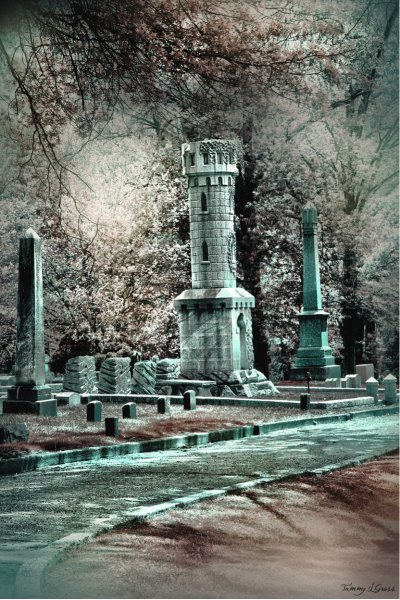
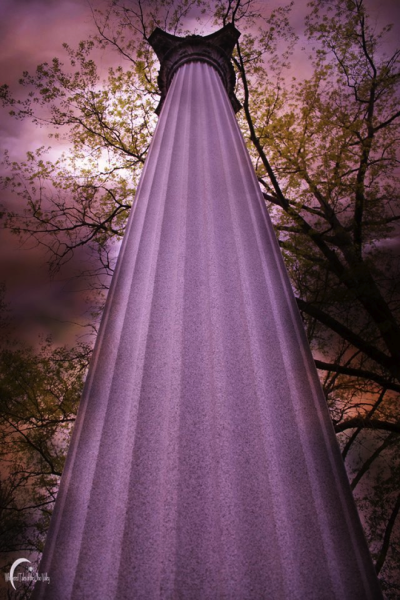
After snapping pictures of all of these monuments, I felt ready to head home and pound out the story. Imagine my frustration when I realized that although the information about Mr. Thomas and company was kind of interesting, it still was not the story. So, you know what that meant. Yep, back to Greenwood I would have to go.
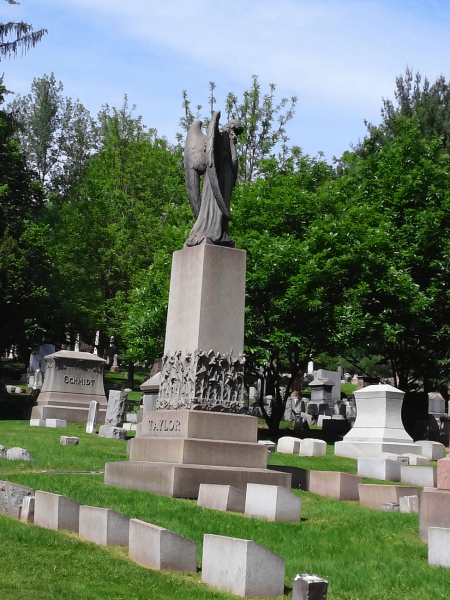
Day Three
At this point, I felt pretty comfortable at Greenwood. I drove through the open wrought iron gates and went down the slight decline toward the right. This time, I followed the road to the very bottom. As I was driving, I took note of the names on the headstones closest to me. Many of the names were familiar. As I continued to wind through the cemetery, I began to notice the beauty and uniqueness of each of the headstones. Sure, they weren’t large mausoleums, but each expressed its love for the person who was laid to rest there. That’s when the idea started to form in my head. The mausoleums were lovely and true testaments to the love, respect, and prominence the person experienced during life, but so were the smaller headstones and monuments. Maybe the grandiose gesture wasn’t the story; perhaps the simple statement was. So I started snapping pictures of the more “normal” parts of the cemetery — the parts where the Smiths and the Sinclairs and the Moores and the Joneses are buried. The gray, bronze, black, red, and tan headstones. The intricately engraved and the almost bare. The large and the small. As I left on my third day, I knew I was onto something, but I still wasn’t sure what. I knew I would be back the next day.
Photos courtesy of K.A. Francis
Day Four
This was a quick trip because neither the weather nor my schedule would allow for more than a quick trip through looking for something to jump out at me that I hadn’t notice before. I found myself smiling at what were now familiar landmarks as I drove through. The story was right there, at the tips of my fingers. I just knew it.
Day Five
The idea finally gelled as I drove through the gates. This isn’t just a cemetery. This isn’t just a place where the deceased spend eternity. It’s a community. When you drive through Greenwood, you recognize a lot of names. Not just the names of the pillars of Wheeling, but names from your personal life. Relatives. Neighbors. Coaches. Teachers. Friends. Just as I can walk through Warwood, where I grew up and tick off who lived where, seeing the names on the headstones is just as familiar an experience. Greenwood might not be the oldest cemetery in the Valley, but I’d wager it’s one of the most familiar, friendly and welcoming, much like the city in which it resides.
On day five, I parked in the southeast corner of Greenwood. The graves are adorned with flowers, flags, lanterns, and other trinkets that are private expressions of love between the deceased and loved ones. It’s a newer, relatively sparse part of the cemetery, with younger trees and large gaps between gravesites, but for me it was the perfect metaphor for a city in the midst of a resurrection. I think of the open space as Wheeling trying to reinvent itself, while the graves that are already there, comfortable in their existence while peacefully welcoming the changes. The Blochs, the Smiths, the Moores, and the Hazletts are all coexisting in harmony. Social status and name recognition take a backseat to existing peacefully side-by-side.
Greenwood is welcoming. It’s like an old friend, full of warmth and good memories. You don’t even have to get out of your car or wander off the main road to run into someone you know. And that also describes Wheeling. Take a trip downtown during a festival or even at lunchtime on a Tuesday and you are bound to run into someone you know. It’s just that kind of place. And I find just as much comfort in that as I do in Greenwood.
